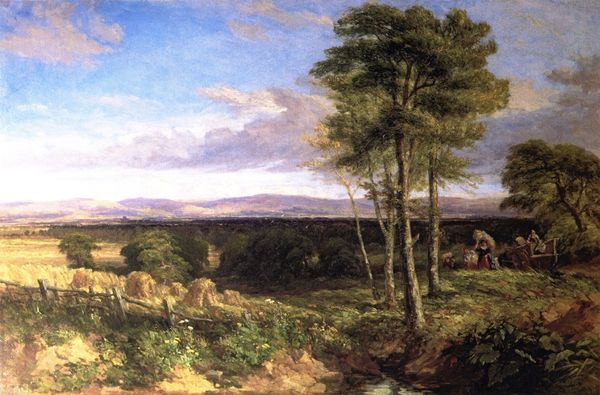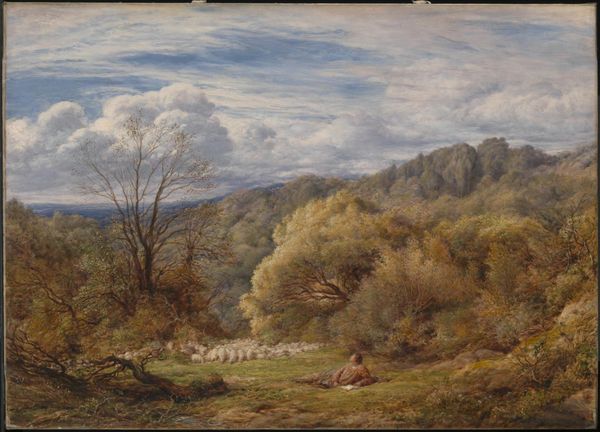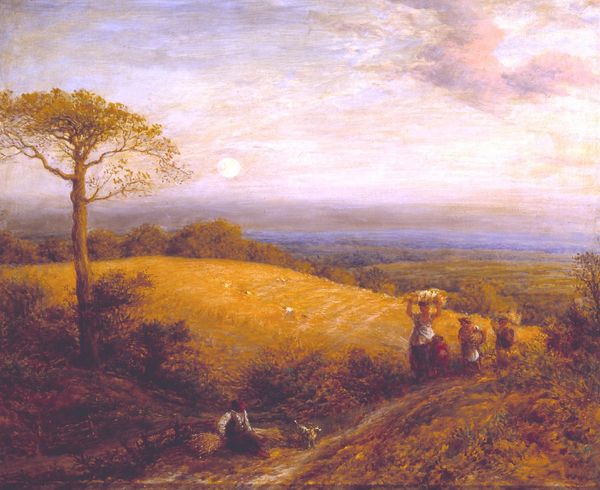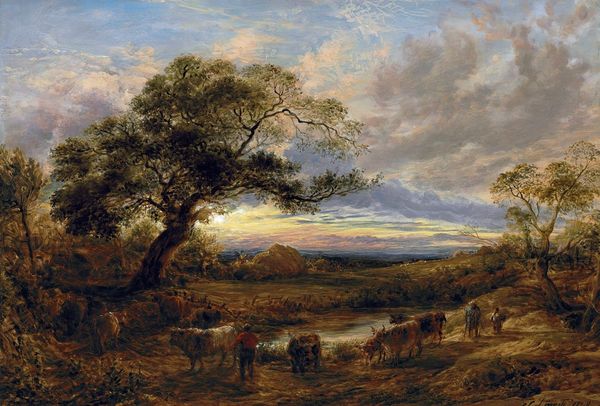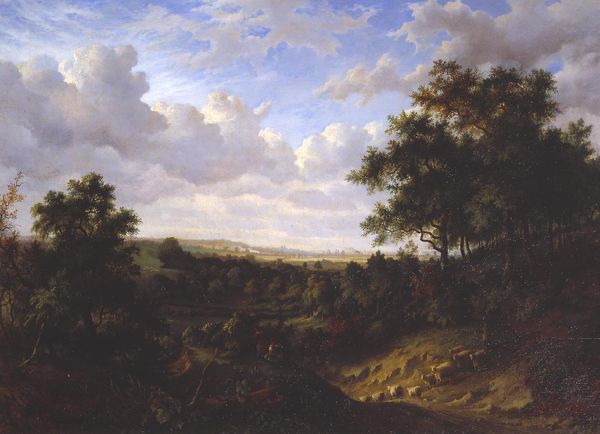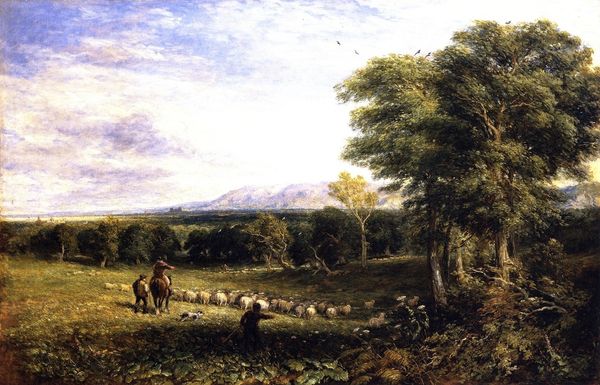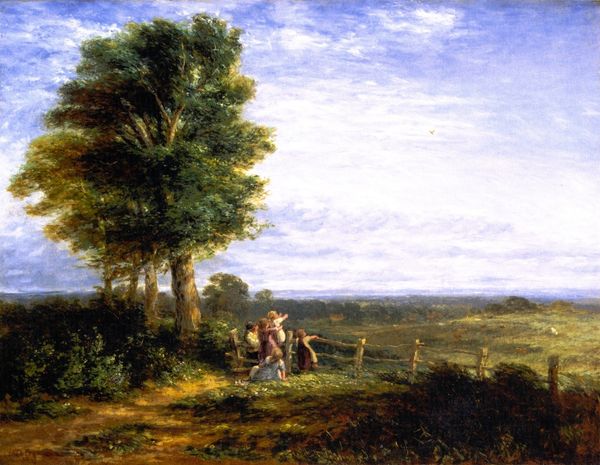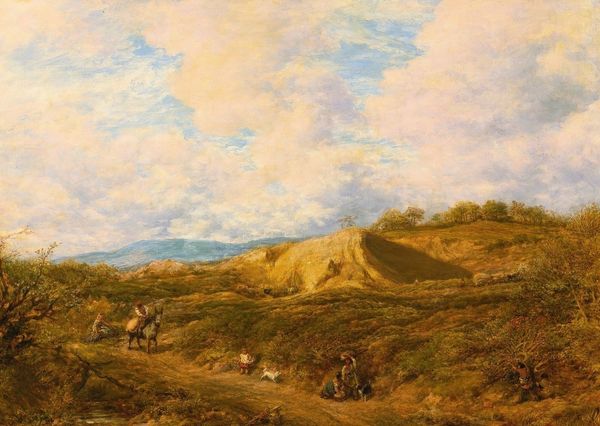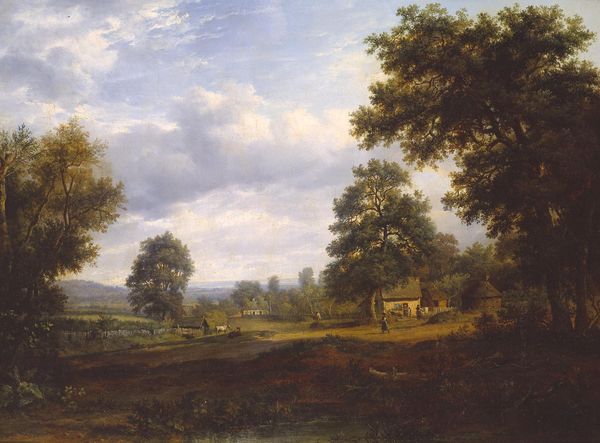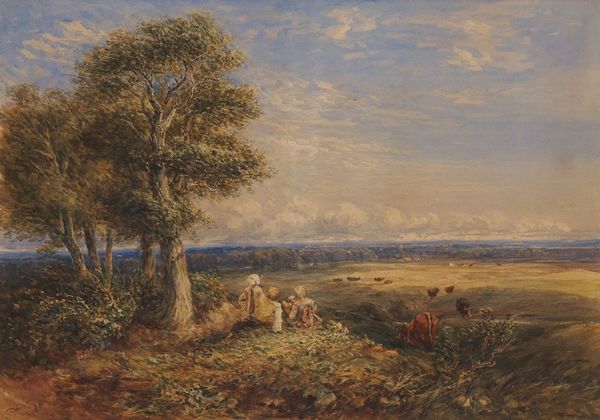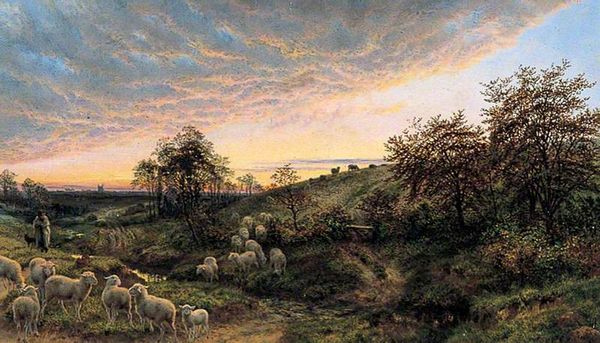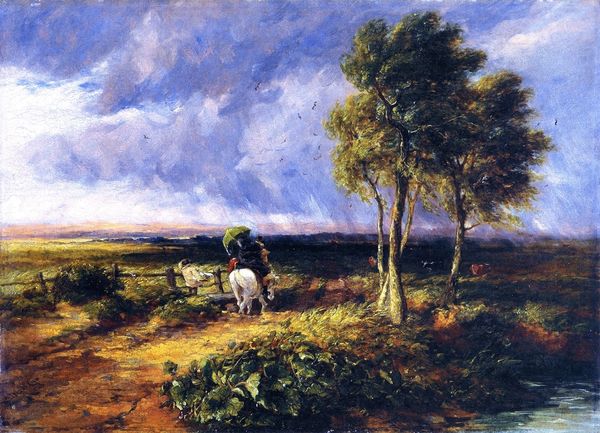
painting, watercolor
#
tree
#
sky
#
painting
#
landscape
#
oil painting
#
watercolor
#
romanticism
#
mountain
Copyright: Public domain
Curator: What an atmospheric painting! David Cox created this watercolor titled "Vale of Clwyd" in 1848. The vista unfolds dramatically. Editor: My initial impression is a feeling of immense space combined with a kind of bucolic harmony. The dramatic sky draws the eye upward. It’s both calming and imposing. Curator: Cox was deeply inspired by the landscape, and this piece, made later in his career, showcases his signature loose and expressive brushwork. Romanticism clearly influenced his tendency to idealize the landscape. It also hints at the social context—enclosure acts dramatically impacted how ordinary people accessed the land during this era. Editor: Right, we often forget that idyllic pastoral scenes can mask realities of displacement and control. Look how the sheep are penned in on one side. Perhaps that resonates unconsciously as part of the viewing experience. There is such rich darkness there against those billowy whites. Curator: His technique is particularly interesting here; it almost feels abstract in sections, doesn't it? When one reflects upon his influences, particularly the work of J.M.W. Turner and their shared interests in the interplay of light and atmosphere it becomes evident that Cox was very interested in conveying mood above topographical accuracy. Editor: Absolutely, and I think the subdued palette enhances that moodiness. The muted greens and blues feel very English, but there’s also this tension between the wildness of nature and the tamer, more ordered fields in the foreground. This almost theatrical staging draws attention to themes of privilege and possession too. Whose vision are we adopting here? Curator: That’s a complex issue in 19th-century landscape painting in general! However, as much as art always reinforces certain prevailing conditions, perhaps his rendering encourages us to see more actively as opposed to simply accept received and imposed forms of understanding and interpretation. Editor: It's true that it raises questions instead of neatly answering them, particularly as its composition holds us there between dark shadows and radiant distance. It pushes us towards some space of discovery, some agency within the viewing experience. Curator: It’s fascinating to consider how it was first received and also what we can take away now in terms of how perceptions change, shift, and also stay much the same. Editor: I agree, thinking about this painting has made me reflect on art's power to reveal as much as it obscures—offering new layers of analysis across history, and sparking necessary discussions around place, power, and representation.
Comments
No comments
Be the first to comment and join the conversation on the ultimate creative platform.
